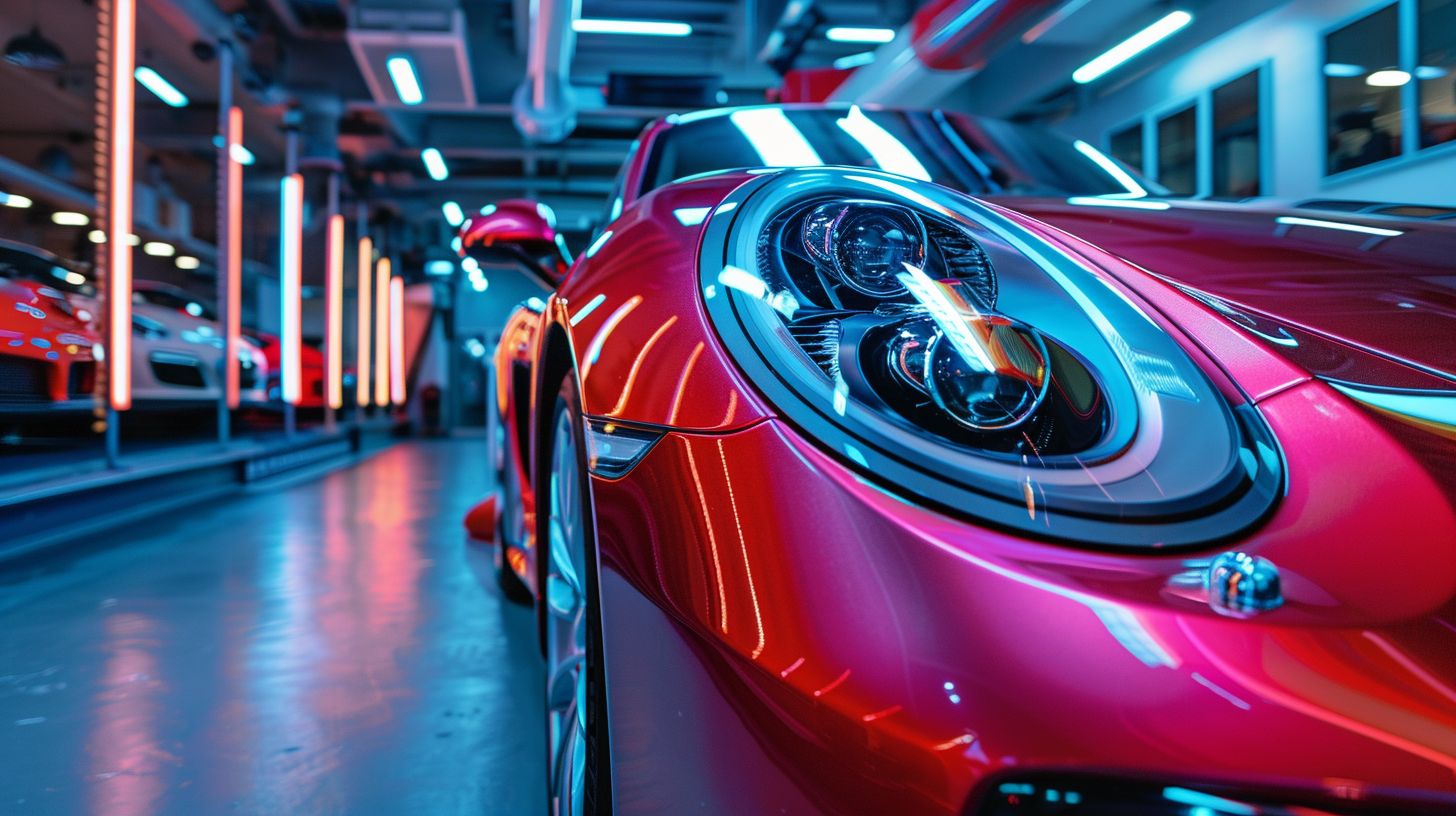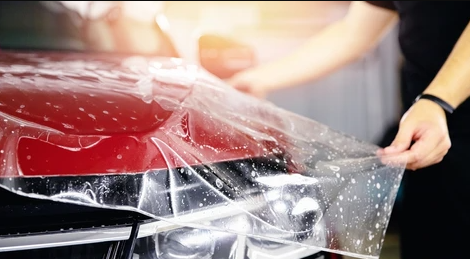Understanding the Different Sorts Of Paint Protection Available for Cars
Browsing the myriad of paint protection options for lorries can be a complicated yet vital job for auto owners aiming to maintain their investment's look and value. From the familiar regimen of applying conventional wax to sophisticated solutions like ceramic layers and paint defense films, each method offers one-of-a-kind benefits and challenges.
Traditional Wax
Conventional wax continues to be a popular selection for auto lovers seeking to shield their vehicle's paintwork. Esteemed for its capacity to enhance the aesthetic charm of auto surfaces, typical automobile wax typically is composed of natural components, such as carnauba wax, beeswax, and various oils. These components are mixed to develop a product that provides a deep, shiny luster, accentuating the color and depth of a lorry's paint.
When used, typical wax creates a sacrificial layer that guards the paint from environmental impurities like dust, gunk, and light UV direct exposure. Although it does not bond chemically with the paint surface, as some contemporary options do, the wax's protective layer works in pushing back water and keeping a tidy exterior. This kind of protection usually needs routine reapplication to maintain its efficacy, as the lifespan of conventional wax is typically restricted to a couple of weeks or months, depending on environmental problems and vehicle usage.
Application of conventional wax is typically straightforward, involving the application with an applicator pad and buffing to a high gloss. Regardless of innovations in paint defense modern technology, conventional wax stays a trusted choice for those valuing classic methods and aesthetic appeals.
Paint Sealants
Unlike conventional wax, paint sealants supply a longer-lasting remedy for securing a car's paintwork. Generally formulated from synthetic compounds, paint sealants are created to supply resilient security against ecological pollutants, UV rays, and minor abrasions. Unlike wax, which might require constant reapplication, a premium paint sealant can last anywhere from 6 months to a year, depending upon driving problems and maintenance regimens.
The application process for paint sealers is typically straightforward, calling for a clean, completely dry surface for ideal bond. Once used, sealers develop a resilient obstacle that improves the vehicle's gloss and depth of shade, equaling the visual charm provided by wax. Notably, the synthetic nature of sealants allows them to bond more successfully with the vehicle's surface area, developing a much more long-lasting shield.
In addition, paint sealants are specifically beneficial for car proprietors looking for to lessen maintenance time while making the most of defense. They offer resistance to typical concerns such as water spots and chemical etching, making them a functional selection for those who regularly drive in harsh climate condition or browse urban atmospheres. Overall, paint sealants give a efficient and reliable means of preserving an automobile's look and resale value.

Ceramic Coatings
While paint sealants provide a superb level of security and toughness, ceramic coatings represent a considerable advancement in auto paint preservation. Ceramic finishes are liquid polymers put on a car's exterior to produce a chemical bond with the existing paint (paint protection). This bond develops a protective layer that considerably boosts the car's resistance to ecological impurities, such as UV rays, bird droppings, and acid rainfall
One of the most remarkable attributes of ceramic finishes is their hydrophobic homes. This quality ensures that water, in addition to dust and gunk, is effectively warded off from the surface, making the car simpler to clean and keep. Additionally, ceramic coverings offer a high-gloss coating, improving the aesthetic allure of the car with a mirror-like shine.
Longevity is one more key advantage of ceramic coatings. Unlike typical waxes or sealers that may call for regular reapplication, ceramic coatings can address last a number of years with correct upkeep, offering long-lasting protection and worth. The application procedure, nevertheless, needs precision and knowledge, often requiring professional setup for optimum results. In recap, ceramic coverings give exceptional security, convenience of maintenance, and improved aesthetic charm, making them a preferred option for auto enthusiasts looking for a high level of surface area protection.

Paint Security Film
Lots of cars and truck proprietors transform to Paint Security Film (PPF) as an efficient option for protecting their automobile's exterior. This transparent thermoplastic urethane movie is diligently put on the repainted surface areas of a cars and truck, supplying a durable shield against numerous ecological dangers. PPF stands out in securing against rock chips, small abrasions, and the unsafe results of UV radiation, therefore preserving the car's pristine look gradually.
One of the vital benefits of PPF is its self-healing buildings. Minor scrapes and swirl marks on the movie can vanish with exposure to warmth, such as sunshine or warm water, making sure that the protective layer stays unobtrusive while keeping its efficiency. This technology not just improves the visual charm of the car but additionally adds to its resale value by lessening wear and tear.
PPF is additionally extremely personalized, permitting car owners to choose specific areas for defense, such as the hood, fenders, mirrors, or the whole car. Specialist installation is advised to guarantee a smooth application and to prevent bubbles or imbalance (paint protection). Overall, Paint Defense Film is a superb investment for auto enthusiasts, using long-lasting security and comfort
Contrasting Paint Security Options
Car owners often encounter the decision of choosing the most ideal paint defense option for their automobiles. The selection often includes examining numerous popular techniques, consisting of paint defense movie (PPF), ceramic coverings, and standard wax. Each alternative supplies distinctive advantages and considerations, requiring a mindful analysis based upon specific demands and assumptions.
Paint protection movie, typically concerned as the most robust solution, supplies a physical barrier that guards the cars and truck's surface from chips, scrapes, and environmental contaminants. In comparison, ceramic finishings provide a fluid polymer that chemically bonds with the car's paint, providing a shiny finish and durable security against UV rays, chemicals, and minor scrapes (paint protection).
Traditional wax, see a time-honored choice, offers a much more affordable yet less durable kind of protection. It uses a short-term guard against contaminants and improves the vehicle's luster. It necessitates regular reapplication to preserve its safety characteristics.
Inevitably, the decision hinges on variables such as budget plan, wanted longevity, and the degree content of defense sought, directing auto owners to one of the most appropriate option.
Verdict
The diverse range of paint protection alternatives readily available for autos serves various protective needs and budgets, each offering unique advantages. Repaint sealants deliver longer-lasting artificial defense. Repaint protection film provides a durable obstacle against physical damages.
Browsing the myriad of paint defense choices for cars can be a complicated yet vital task for vehicle owners intending to preserve their investment's appearance and worth.While paint sealers supply an excellent degree of defense and sturdiness, ceramic coatings stand for a considerable improvement in automotive paint conservation.Several cars and truck proprietors transform to Repaint Protection Film (PPF) as an efficient solution for protecting their vehicle's outside. In General, Paint Protection Movie is an exceptional financial investment for automobile enthusiasts, using lasting security and peace of mind.
Auto proprietors often encounter the choice of picking the most appropriate paint protection alternative for their cars.